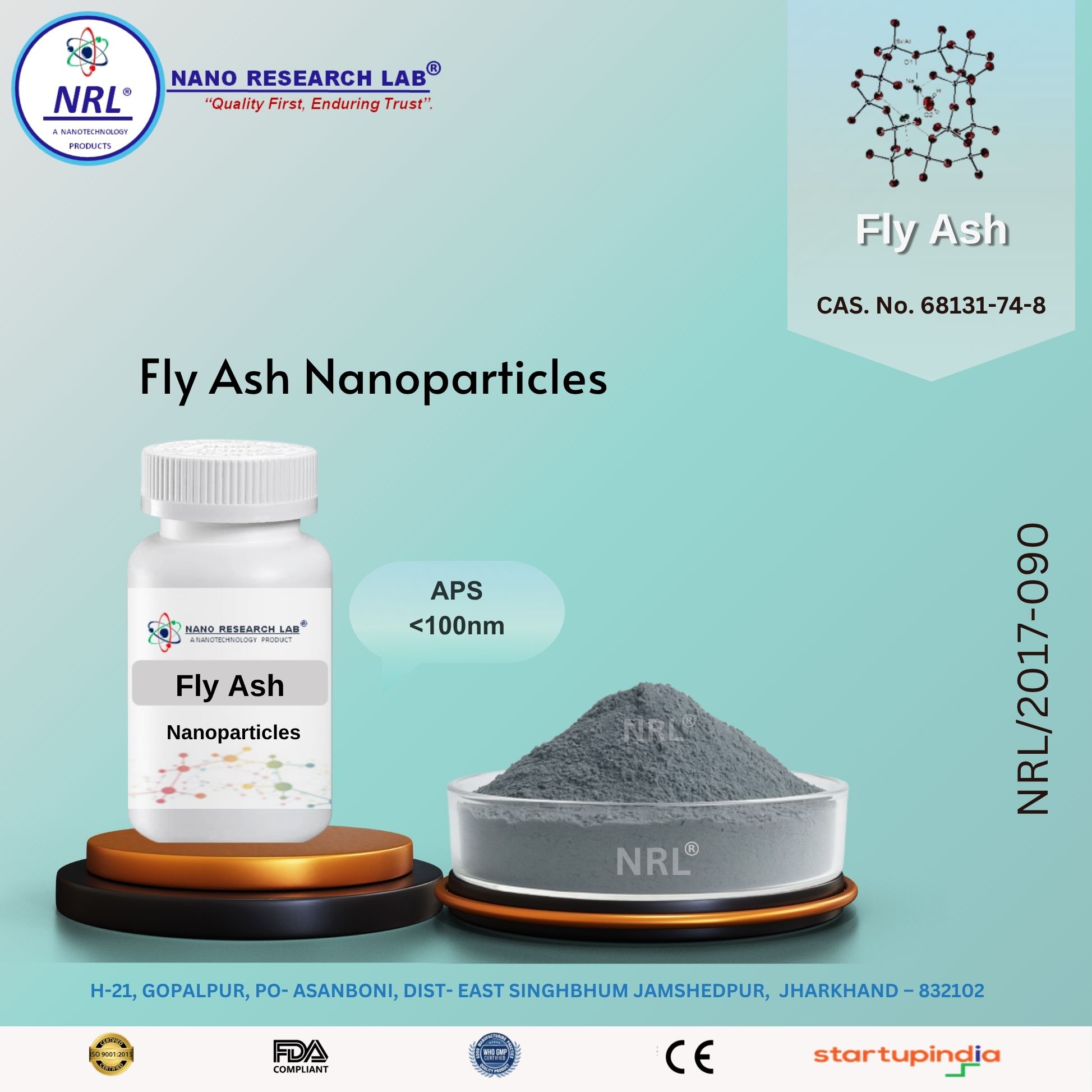
Flyash Nanoparticles/Nanopowder, APS: <100nm, Purity 99.5%)
₹1475.00
Fly Ash Nanoparticles / Nanopowder (APS <100 nm, Purity 99.5%)
⚙️ Technical Specifications
Property | Specification |
|---|---|
Product Name | Fly Ash Nanoparticles / Nanopowder |
Purity | ≥ 99.5% |
Average Particle Size (APS) | < 100 nm |
Appearance | Gray fine powder |
Crystal Structure | Amorphous to partially crystalline (depends on source) |
Density | ~2.2–2.5 g/cm³ |
Composition | Primarily SiO₂, Al₂O₃, Fe₂O₃ with minor CaO, MgO, K₂O |
Solubility | Insoluble in water; stable under ambient conditions |
pH (aqueous suspension) | Slightly alkaline (~8–9) |
CAS Number | 68131-74-8 (for coal fly ash) |
🌟 Key Features
High-purity (99.5%) nanoparticles with <100 nm particle size
High surface area and pozzolanic activity
Excellent thermal stability and chemical resistance
Fine powder ensures uniform dispersion in composites and matrices
Environmentally safe and can be used in industrial, construction, and research applications
🔬 Applications (in Detail)
1. Cement & Concrete Industry
Used as a nano-filler to improve strength, durability, and workability of cement and concrete
Enhances pozzolanic reaction, reducing permeability and carbonation
2. Polymer & Composite Materials
Functions as a reinforcing filler in plastics, rubbers, and epoxy composites
Improves mechanical strength, thermal stability, and surface finish
3. Environmental Applications
Acts as a waste-to-resource material for adsorption of heavy metals, dyes, and pollutants
Can be used in water purification and soil remediation
4. Ceramics & Coatings
Used in ceramic glazes, refractory materials, and protective coatings
Enhances thermal resistance, hardness, and durability
5. Research & Nanotechnology
Ideal for nanomaterials research, composite development, and functional material studies
High surface area allows efficient chemical reactions and functionalization
⚠️ Handling & Storage
Store in a sealed, dry container to avoid moisture absorption
Handle with gloves, mask, and eye protection to prevent inhalation of nanoparticles
Stable under normal laboratory and industrial conditions
Avoid exposure to strong acids or excessive heat
